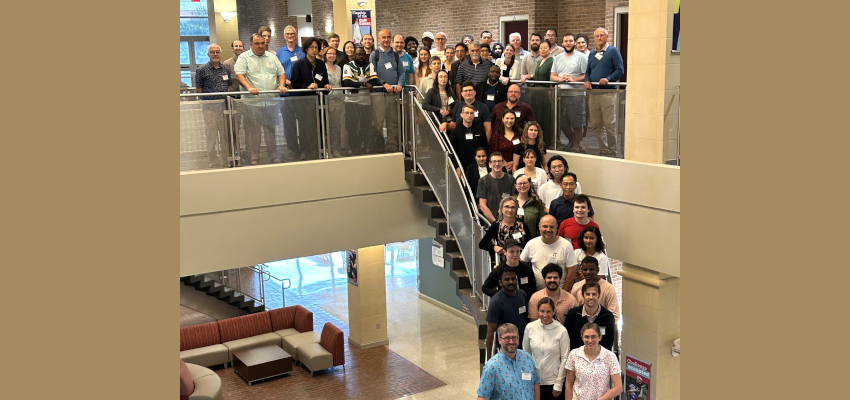USA Hosts SumTopo
Posted on August 24, 2025 by Sarah Waddell

Last week the University of South Alabama hosted the international Summer Conference on Topology and its Applications (SumTopo). The annual meeting of worldwide mathematicians has been held most summers since 1986. This year’s event had nearly 80 in-person attendees, and over 50 participating online. Visitors came from countries like Japan, South Africa and the Czech Republic. Associate Professor Steven Clontz, Assistant Professor Joanna Furno and Associate Professor Elena Pavelescu organized this year’s conference, along with three graduate students. It was supported by a National Science Foundation Grant.
Dr. Clontz and his peers describe topology as “rubber sheet geometry.” Loosely translated,
that means that they study the structure of objects which are allowed to be stretched
or contracted like rubber. An application of this is computer-aided handwriting analysis,
also known as Optical Character Recognition (OCR): even though two people may write
the same letters in different handwriting, OCR allows computers to recognize these
different shapes as representing the same letters.
A new frontier for this conference debuting at South was its special session on “Topology
and Computing.” Among several presentations on the applications of topology in fields
such as data analysis and artificial intelligence, this session also featured talks
and workshops on how to computationally verify the accuracy of topological arguments.
In this type of “formal math,” proofs are added into a computer – using a programming
language such as Lean built for mathematical formalization – in order to test their
accuracy.
Hannah Fechtner is earning her Ph.D. in logic at Carnegie Mellon. Flechtner enjoys
the event because she gets to meet fellow teachers and researchers who are also studying
and learning. She was surprised at the immediate connection she made at the conference
when she met two attendees who, like her, also previously worked in outreach at the
Museum of Math in New York City.
When prompted by the question ‘why did you attend this year’s event?’ Flechtner didn’t
hesitate. “I’m here to evangelize Lean.”


